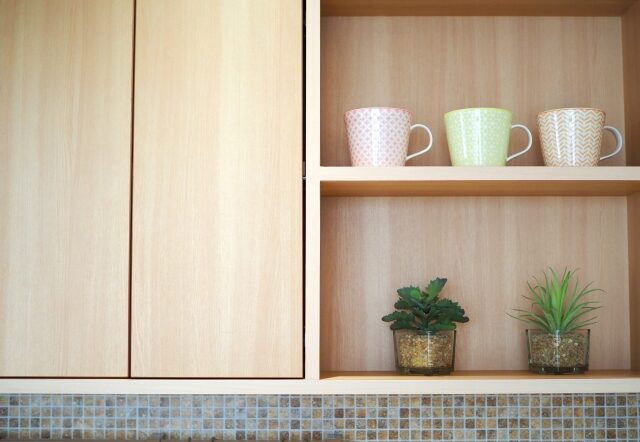
Facing a mountain of clutter can feel as daunting as climbing Everest. It’s no wonder you might feel overwhelmed, not knowing where to begin or how to tackle the mess. But don’t worry, you’re not alone, and you’ve come to the right place.
The good news is that decluttering your home doesn’t have to be an insurmountable challenge. With a handful of practical strategies and a bit of encouragement, you can transform your space into a serene oasis.
In this post, you’ll discover simple, actionable steps to help you clear the clutter and create a home that feels spacious and inviting. Let’s take it one step at a time and turn that clutter chaos into an organized sanctuary. Ready to breathe a little easier? Let’s dive in!
Understanding the Impact of Clutter on Your Well-being
You might be surprised at how much clutter can affect your mental and physical health. Living in a cluttered environment can increase stress, anxiety, and even depression. When every room feels chaotic, it can be tough to relax, which makes finding peace in your own home nearly impossible.
Mental Clarity and Focus
A clutter-free space isn’t just pleasing to the eye; it also enhances your ability to concentrate. When your surroundings are cluttered, your brain struggles to process information, leading to decreased productivity and focus. On the flip side, an organized space encourages clear thinking and creativity.
Physical clutter can also lead to physical health issues. It can contribute to allergies, as dust tends to accumulate in cluttered spaces. Plus, it becomes easier to trip and fall, posing potential safety risks.
Recognizing the impact of clutter is the first step to reclaiming your space and your peace of mind. As you begin to declutter, you’ll likely find an improvement not only in your living environment but also in your overall well-being. Let’s embrace the journey to a more organized, healthier you!
Setting Realistic Decluttering Goals
When tackling clutter, setting achievable goals is key. Start small to avoid becoming overwhelmed. Instead of thinking about the whole house, focus on one room, or even one corner of a room. This makes the task feel more manageable and less intimidating.
Identify Your Priorities
Consider what areas cause you the most stress or frustration. Target those spaces first. Whether it’s a cluttered kitchen counter or an overflowing closet, assigning priority can help you make impactful progress quickly.
Time management is crucial. Allocate just 15-30 minutes a day to decluttering. This way, you’ll make steady progress without burning yourself out. Remember, slow and steady wins the race!
Be kind to yourself, and celebrate small victories along the way. Successfully organizing a single drawer might not seem like much, but it’s a step forward. Reward yourself for staying committed and making progress, no matter how small.
By setting realistic goals, you’ll build momentum and confidence, paving the way for a clutter-free home. Let’s break it down, take those baby steps, and watch the transformation unfold!
Practical Steps to Start Decluttering

Ready to roll up those sleeves and dive into decluttering? Let’s explore some practical steps that can help you get started.
Begin by gathering four boxes or bags: one for items to keep, one for things to dispose of, one for items you’re not sure about, and one for things to move. As you go through your space, sort each item into one of these categories. This straightforward system helps you make decisions more quickly and easily. If you’re having trouble deciding whether to sort something into the trash or not and it’s taking too long, put it in the ‘not sure’ box and come back to it later.
Start with Easy Wins
Feel free to tackle the low-hanging fruit first. Quickly sorting through expired food or outdated clothing can give you a sense of accomplishment and motivation to continue.
Try to commit to the “one in, one out” rule. For every new item you bring into your home, let go of an old one. This helps keep clutter from creeping back in after your hard work.
Enlist a friend or family member to help. Not only can they offer a fresh perspective, but they’ll also make the process more enjoyable. A bit of company and camaraderie can make all the difference.
These steps are all about making decluttering feel doable and even a bit fun. Remember, the goal is progress, not perfection. Let’s turn that daunting task into something completely manageable!
Organizing Your Space for Long-Term Success
Now that you’ve tackled the clutter, it’s time to set your space up for lasting success. Think of organizing as the key to preventing clutter from creeping back into your life.
Start by grouping similar items together. Keep things that belong in the same category or are used together in one place. This makes things easy to find and helps maintain order.
Maximize Vertical Space
Shelves and hooks are your best friends. Using vertical storage can make small spaces feel larger and helps keep surfaces clutter-free. Plus, it opens up new possibilities for organizing areas like closets and kitchens.
Labeling is another powerful tool. Clear labels ensure everyone knows where things belong, making it easier for the whole household to maintain order. It’s a simple step, but it works wonders.
Another tip is to regularly take inventory of your belongings. Set a schedule, maybe once a season, to re-evaluate what you have. This prevents unnecessary items from piling up over time.
Creating these habits now will save you from future clutter headaches. With an organized system in place, your home can remain a tidy and inviting space for the long haul. Enjoy the serenity of your newly organized haven!
Identifying Items to Keep, Donate, or Discard
Deciding what to keep, donate, or discard can be tricky, but some simple questions can guide you through the process. It’s all about being honest with yourself about what you truly need and cherish.
Start with items you haven’t used or even thought about in the last year. If it’s something you haven’t worn, opened, or utilized, it might be time to let it go. These items often hold more clutter than value.
The Sentimental Dilemma
Sentimental items are often the hardest to sort through. Ask whether these items serve a purpose other than nostalgia. If not, try keeping just a few that truly spark joy, and consider taking photos to preserve the memory without the physical footprint.
For items that are in good condition, but no longer serve you, think about donating them. Donations can breathe new life into these objects and help someone in need. Plus, knowing your things will continue to be useful can make parting with them easier.
Discard anything broken or beyond repair. These items take up space without serving any benefit. Recycling is an eco-friendly way to dispose of these items when possible.
Following these guidelines helps streamline the process, making it simpler to maintain a happy, clutter-free home. Let’s create a living space filled only with things you love and use!
Developing Sustainable Decluttering Habits
Keeping your home clutter-free isn’t just a one-time task; it’s about fostering habits that help you maintain order long-term. The first step is to evaluate your purchasing habits. Before you buy something new, ask yourself if it’s truly necessary and if it will add value to your life.
Create a routine for handling items that come into your home. Whether it’s mail, new clothes, or household items, have a designated spot for these things and take a few minutes each day to put them away. This act can prevent piles from forming in the first place.
Consistency is key to sustaining a decluttered space. Set aside a regular time each week or month to reassess your belongings. This helps catch accumulating clutter before it turns into a larger mess.
Involve your household in the decluttering process as well. Teach everyone the importance of organization, and share these habits so everyone contributes to keeping the space tidy. It builds teamwork and makes the task easier for everyone.
By integrating these habits into your daily life, you’ll not only enjoy a cleaner home but also a more peaceful and organized mind. Let’s make decluttering a lifestyle, not just a project!
Seeking Support and Accountability
Decluttering can sometimes feel overwhelming, and that’s where support and accountability come in handy. Sharing your goals with friends or family can motivate you to keep going and make the process feel less daunting.
Consider forming a decluttering group with friends or neighbors. Meeting regularly to share progress, exchange tips, and celebrate successes can make a significant difference. It’s a great way to stay accountable and share encouragement.
Online communities and social media groups focused on decluttering are also excellent resources. You’ll find inspiration in shared stories and ideas, and you might even pick up some creative solutions you hadn’t considered.
If you find yourself struggling to make progress, hiring a professional organizer could be a worthwhile investment. They can offer personalized guidance and strategies tailored to your needs, and their expertise can accelerate your decluttering journey.
Remember, it’s okay to ask for help—no one has to go it alone. Having someone to lean on can make decluttering less of a chore and more of a shared adventure. Embrace the support, and watch your journey to a clutter-free home flourish!
The Bottom Line: Maintaining a Clutter-Free Environment
In conclusion, maintaining a clutter-free environment is both a journey and a practice. It starts with understanding the impact of clutter on your well-being and setting realistic goals to tackle it. Once you break the task down into manageable steps, it becomes less intimidating and more rewarding.
As you continue, remember the importance of organizing your space for long-term success. Implementing simple systems like grouping similar items, maximizing vertical space, and regular inventory checks will go a long way in keeping clutter at bay.
It’s also crucial to develop habits that sustain a tidy home. Evaluating your purchasing decisions, handling incoming items promptly, and involving all household members turn decluttering into a collective responsibility rather than an individual burden.
Seeking support and accountability from friends, family, or professional organizers can provide the motivation needed to stay on track. Engaging with a community offers fresh perspectives, helpful tips, and much-needed encouragement.
At the end of the day, a clutter-free home is more than just an aesthetic goal; it’s about creating an environment that supports your mental health, encourages productivity, and enhances your overall quality of life. By integrating decluttering into your daily routine, you ensure that your living space remains a sanctuary of peace and order.
So embrace this ongoing process with enthusiasm! With patience and persistence, you’ll cultivate a home that not only meets your needs but also brings you joy and ease every single day.
